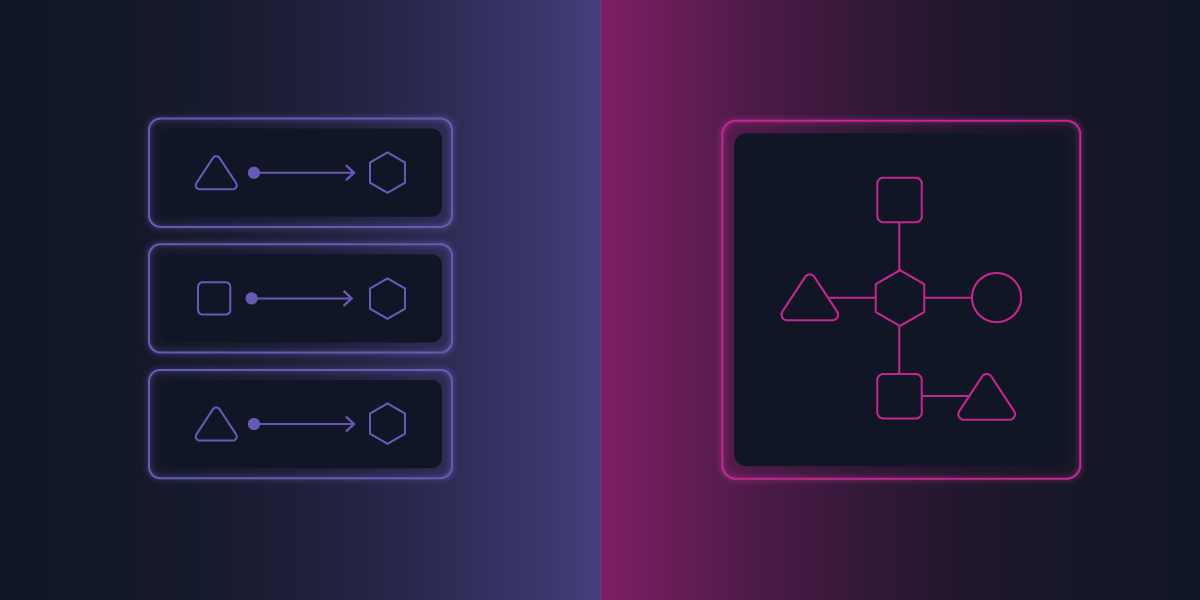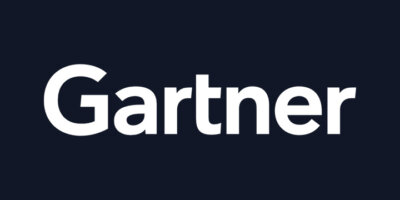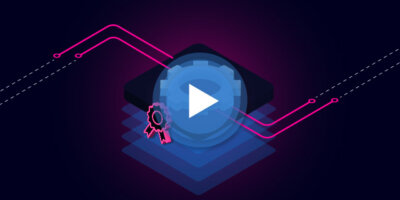For a while now, the terms “network automation” and “network orchestration” have been used relatively interchangeably in our industry. We’re not exactly innocent here either — it’s a distinction that’s taken a while to permeate the market, and historically we’ve leaned on more familiar automation concepts when talking about our technology.
They’re actually two distinct (but very related) concepts. Understanding both — the differences, and when and how to leverage them — is key to transforming how your network infrastructure is delivered and consumed to support modern, agile operations. Organizations who can successfully adopt both automation and orchestration can significantly accelerate IT processes across increasingly complex infrastructure environments, facilitating innovative operational models like infrastructure as code, self-service infrastructure, and platform engineering.
What Is Network Automation?
Network automation happens at the domain level. Networking activities like configuration changes and device provisioning can be automated when engineers build Python scripts, Ansible Playbooks, and other automation assets. Automations are vital to network teams’ capacity to keep up with the increasing demand for network services.
Generally, network automations are high-code assets, built by network engineers who are proficient with Python, Ansible, and/or Terraform. There are also low-code, domain-specific automation tools such as SD-WAN controllers or single domain automation solutions built by equipment vendors. As a result, companies typically have several different automation tools and strategies within the organization, as teams will use best-fit tooling for specific domains.
Network automations can be limited in scope to the individual or team that authored them — for example, while a data center team might have built out a library of scripts for implementing network changes that make up most of their day-to-day service requests, they’re still hand-executing them in response to tickets or messages.
Network automation key benefits:
- Task standardization: Network engineers spend less time and effort on repetitive or routine networking activities.
- Error reduction: Increased consistency reduces human error, producing more reliable outcomes at scale.
- Networking scale: As network environments become larger and more complex, automation is key to continued, consistent service delivery.
Network automation requirements:
- The right tools: Building a strategy that leverages open source tooling and incorporates any domain-specific solutions available.
- The right expertise: Individuals who bring both network expertise and proficiency with Python, Ansible, and/or Terraform to build effective automations.
- Participation: Buy-in from both network engineers, management, and the end users who will consume automated network services.
- Collaboration & centralized execution: The ability for network engineers to leverage each other’s automations and treat automations as assets (e.g. storing in Git, attaching API endpoints, etc.).
What Is Network Orchestration?
Network orchestration takes place a level above individual network domains. It’s about coordinating individual tasks across different domains and external systems to create a workflow that encompasses the full process, end to end.
Domain-level network automation is focused on the implementation phase of a network change process. There are many other steps, often involving additional network and IT systems — steps like change management activities, inventory and IPAM, pre- and post-checks, and interacting with sources of truth. Orchestrating a process end-to-end means automating each piece of it and coordinating the steps so the process can be delivered as a standardized service — a mature version of this approach is also known as productizing the network.
Network orchestration is an important evolution, especially for large organizations. Orchestration enables organizations to significantly accelerate the delivery of network services, even complex services across global, hybrid cloud and on-premises infrastructure. This standardization and acceleration is vital to enabling innovative operating models like self-service networking and platform engineering.
Network orchestration key benefits:
- Workflow standardization: Teams can coordinate complex workflows and turn them into consistent, repeatable outcomes.
- Faster service delivery: Automation extends to every phase of a change process, not just the implementation phase.
- System-wide efficiency: Network and cloud infrastructure can become a driver for agility, flexibility, and innovation.
- Self-serve networking: Standardized workflows can be delivered as productized outcomes for end users and other platforms to self-serve via API calls, enabling platform engineering approaches.
Network orchestration requirements:
- Bridging the gaps: The ability to incorporate both CLI and API assets in a workflow and orchestrate activities across multiple domains, including public cloud, private cloud, and traditional infrastructure.
- Data transformation: The ability to automate data manipulation between coordinated activities (network automations + API calls) so workflows don’t require manual intervention.
- Vendor-agnostic integration: API-driven integration capabilities that avoid vendor lock-in and allow teams to select the appropriate solutions for their domains.
- Streamlined, secure exposure: The ability for end users, systems, and platforms to consume network services quickly and easily, without compromising network security or configuration compliance.
How Orchestration Enhances Automation
Today, organizations are committed to hybrid infrastructure architectures, with applications and services hosted in data centers, private clouds, and public clouds. While network teams can find a lot of success with domain-specific network automation, the technology integration needs, complexity, and variety of skills needed to manage bespoke automation across many different siloed domains are significant challenges.
Multi-domain orchestration technology allows automations to become more impactful across complex environments, without requiring more work or a change in working patterns from network engineers or network consumers.
With orchestration, network teams can leverage automation assets as part of larger workflows, and reuse those assets between workflows when possible, helping the team build automations faster. In addition, integration and data transformation capabilities allow teams to focus more on building automations and less on the surrounding work to integrate them with key systems or manually manipulating data to feed a script. In addition, because workflows represent an entire process end-to-end, orchestration enables self-service and rapid delivery. It makes everything faster and more consistent at scale, from developing applications to opening up a new physical office location.
It’s not about replacing automation tooling — it’s about transforming and enhancing the way these technologies are used so they can all operate together.
What’s Your Strategy?
How does your organization leverage network automation and orchestration technology today? For many large organizations, the complexity and scale of network infrastructure has historically deterred large-scale standardization and automation efforts. But with a successful strategy that incorporates domain-specific network automations and multi-domain workflow orchestration, organizations can transform their networks from cost centers into drivers for innovation.
What does network transformation look like?
- High-quality network and infrastructure services, delivered to end users instantly and consistently across complex global infrastructure.
- Network services are deployed and consumed like other IT infrastructure, through environments like pipelines, ServiceNow, and internal platforms.
- A streamlined, cloud-like user experience for end users both internal and external.
- Revolutionary efficiency gains from implementing innovative strategies like NetDevOps, infrastructure as code, and platform engineering.
It’s about enabling a paradigm shift: the network can be a strategic asset instead of a cost center. Watch this session from AutoCon0, Evolving the Network Automation Journey from Python to Platforms, for a deep dive on how understanding both automation and orchestration helps organizations evolve.





